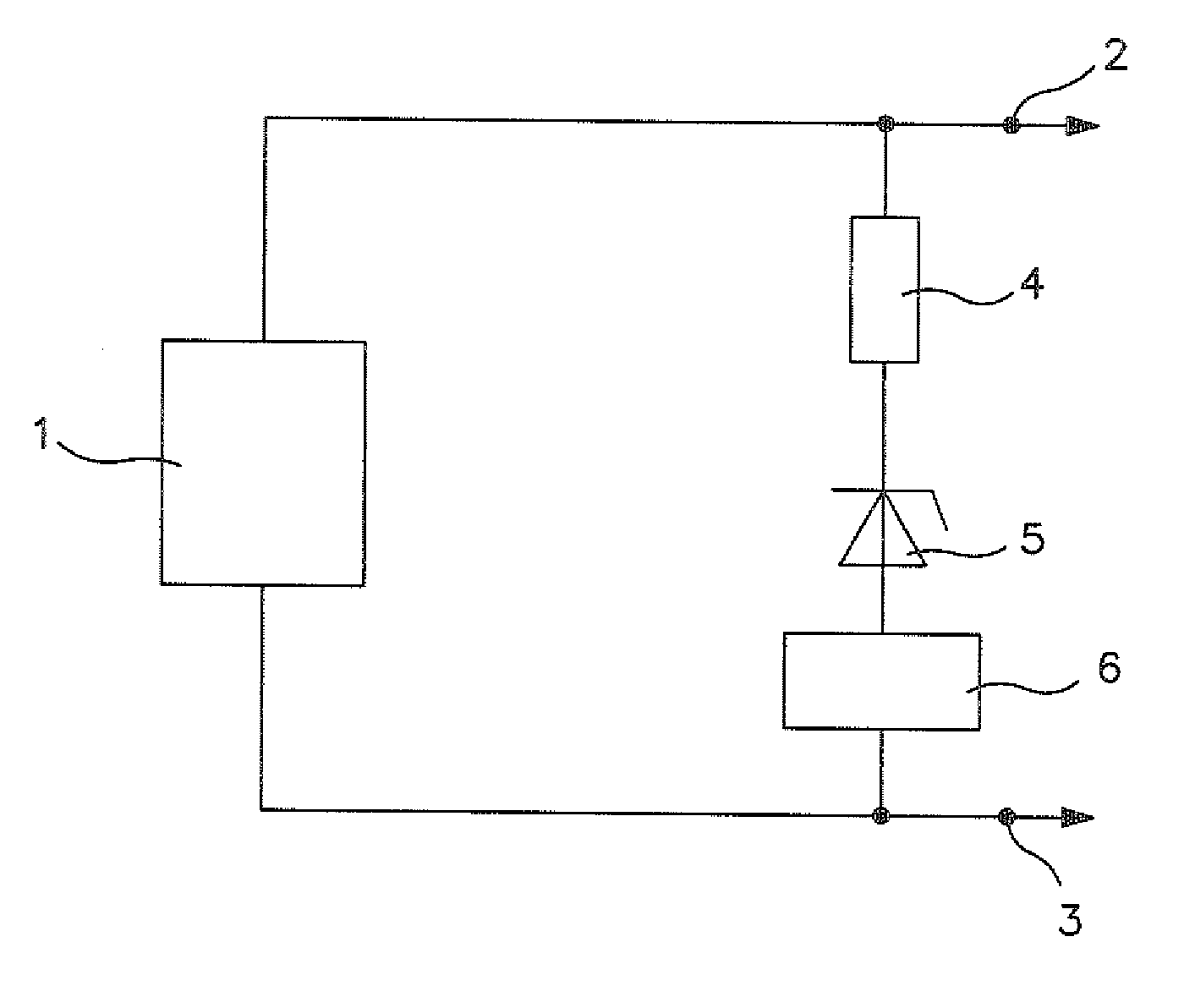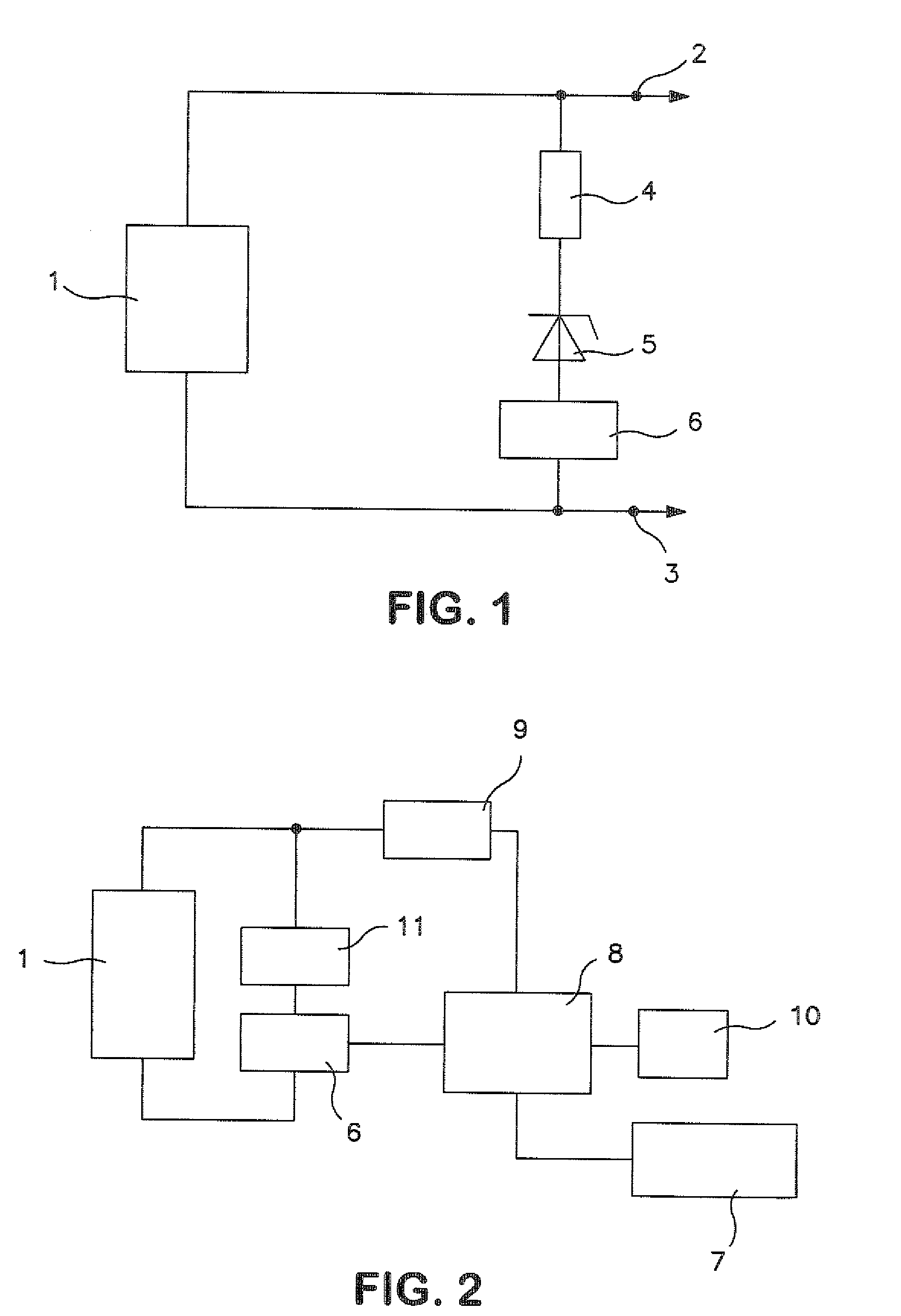Rechargeable battery with internal discharger
a rechargeable battery and discharger technology, applied in the field of rechargeable batteries, can solve the problems which are problematic, not only in terms of operation and charging, but also in terms of storage of lithium rechargeable batteries, lithium-ion batteries especially, and rechargeable batteries constructed of them, etc., to achieve the effect of increasing the aging of the rechargeable batter
- Summary
- Abstract
- Description
- Claims
- Application Information
AI Technical Summary
Benefits of technology
Problems solved by technology
Method used
Image
Examples
Embodiment Construction
[0022]The term battery or rechargeable battery is understood hereinafter to mean the electrical interconnection of one or more rechargeable cells inside a battery housing. The described rechargeable battery of the invention can be used for instance for supplying power to electric power tools.
[0023]FIG. 1 shows a first exemplary embodiment of the invention. The two poles of a rechargeable lithium-ion battery 1 with one or more electrochemical cells are connected by terminals (contacts) 2 and 3 that are disposed on the periphery of a battery pack. The terminals 2 and 3 serve to connect a current-drawing device (not shown) or for charging the rechargeable battery 1.
[0024]In the analog version of the invention shown in FIG. 1, a series circuit comprising a Zener diode 5, a resistor 4, and a switch 6, is connected parallel to the rechargeable battery 1. By actuation of the switch 6, which in the exemplary embodiment is assumed to be manually actuatable, on the battery pack, the rechargea...
PUM
 Login to View More
Login to View More Abstract
Description
Claims
Application Information
 Login to View More
Login to View More - R&D
- Intellectual Property
- Life Sciences
- Materials
- Tech Scout
- Unparalleled Data Quality
- Higher Quality Content
- 60% Fewer Hallucinations
Browse by: Latest US Patents, China's latest patents, Technical Efficacy Thesaurus, Application Domain, Technology Topic, Popular Technical Reports.
© 2025 PatSnap. All rights reserved.Legal|Privacy policy|Modern Slavery Act Transparency Statement|Sitemap|About US| Contact US: help@patsnap.com


